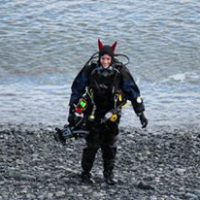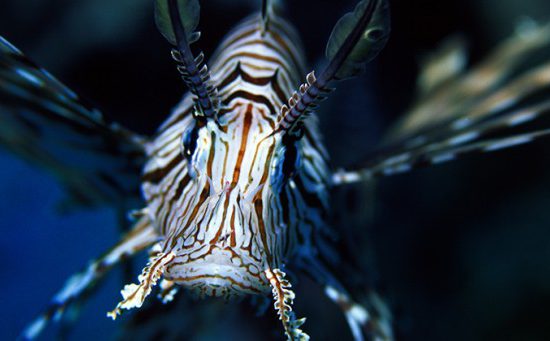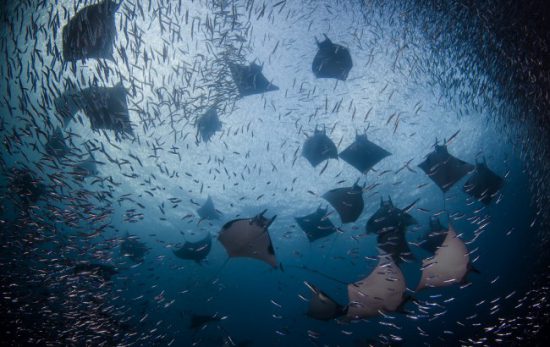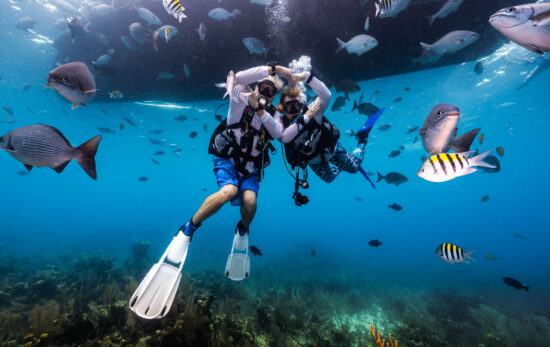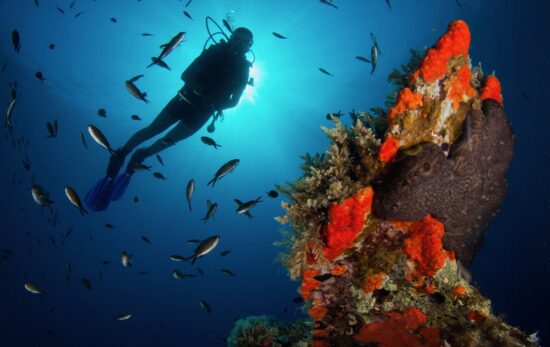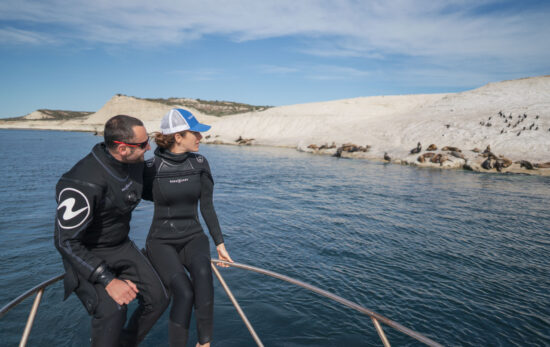Diving into the mesmerizing depths of our ocean is a breathtaking experience that unlocks a world of wonder and beauty. However, amidst the allure of marine life, a crucial mantra resonates louder than ever: ‘Look but please don’t touch.’ Beyond preserving the delicate balance of our underwater ecosystems, there’s an even more compelling reason to respect these marine animals. In this blog, we’ll cover a list of toxic marine life species that deliver a nasty punch to those who dare disturb their tranquil existence. Let’s dive in and discover the astonishing power of nature’s self-defense mechanisms, and why it’s best to admire from a safe distance.

1. Fire Coral
Where: Indian, Atlantic and Pacific Oceans, Caribbean Sea
Toxin Purpose: Prevents other reef organisms growing on top of it
Despite its name and the way it forms part of reef structures, fire coral is more closely related to jellyfish than other corals. It’s covered in long, fine hairs with stinging cells which are almost invisible to see but, if brushed against, will deliver anything from a mild irritation to a severe burning sensation to the skin.

2. Stonefish
Where: Indian and Pacific Oceans
Toxin Purpose: Defence against predators
The stonefish is the most venomous fish in the ocean. What makes it worse is that it’s a master of camouflage; many victims have mistaken them for a rock. The venom is injected from spines in the dorsal fins (the amount of which depends on how much pressure was applied) causing agonizing pain for several hours, and in extreme cases, paralysis, shock or even death.

3. Box Jellyfish
Where: Northern Australia, Indian and Pacific Oceans
Toxin Purpose: Immobilizing prey
Regularly cited as one of the most dangerous animals on the planet, the chironex fleckeri box jellyfish (aka the sea wasp) has enough venom to kill 3,000 humans within 3 minutes. Even scarier? This deadly jelly can have up to 60 tentacles that grow to 5 meters (16 feet) long and can be almost invisible to see. The pain is said to be so bad that victims can suffer fatal shock or heart failure before they get treatment; those who survive will have resulting scars from the contact.

4. Blue-Ringed Octopus
Where: Indian and Pacific Oceans (from Japan to Australia)
Toxin Purpose: Immobilizing prey
The blue-ringed octopus may be small (no more than 20cm/8in), but don’t let that fool you. Its venom is 10,000 times more potent than cyanide and can kill a person (in fact, several people) within minutes. When disturbed, this cephalopod’s blue rings will flash brightly to warn you. If it bites, you won’t even feel it, but the venom enters the wound through saliva causing numbness, paralysis, respiratory failure and even death.

5. Sea Snakes
Where: Indian and Pacific Oceans
Toxin Purpose: Immobilizing prey
Sea snakes can deliver a dangerous bite that’s even more toxic than their land-based counterparts. Generally they are non-aggressive and only attack if provoked, but a bite will result in stiffness, aching and localized pain after about half an hour, leading to nervous system problems and eventually respiratory paralysis.

6. Nudibranchs
Where: Found worldwide
Toxin Purpose: Defence against predators
With the absence of big teeth, tentacles or hard shells, nudibranchs have a different – and clever – tactic for staying safe. Although some can generate their own chemicals, many nudibranchs will store the toxins and stingers from sponges, corals and other organisms it feeds on, releasing them at will in times of peril. The good news is that these colorful little critters don’t pose any threat to divers.

7. Pufferfish
Where: Tropical and subtropical waters
Toxin Purpose: Defense against predators
Also known as a blowfish, these creatures try to make themselves unappealing to predators by ingesting water and swelling up to several times its size. Although a pufferfish can’t inject its poison, predators that eat this critter will get a nasty shock. There’s enough tetrodoxin contained within a pufferfish’s body to cause vomiting, paralysis, heart failure and death for 30 adult humans.

8. Cone Snail
Where: Indian and Pacific Oceans
Toxin Purpose: Immobilizing prey
Although they might look harmless, this snail is another of the world’s most dangerous animals. They have hollow teeth which they use to inject venom after harpooning prey – usually mollusks – and these teeth can reach most parts of its shell. The venom from a cone snail causes pain, swelling and tingling and, in severe cases, results in paralysis, respiratory failure and death.

9. Lionfish
Where: Found worldwide
Toxin Purpose: Defense against predators
The lionfish is a highly venomous found in tropical waters around the world. They are known for their striking appearance with colorful fins and spines. However, their venomous spines can cause excruciating pain, swelling, and, in rare cases, even more severe reactions. In the Caribbean, lionfish are highly invasive species.
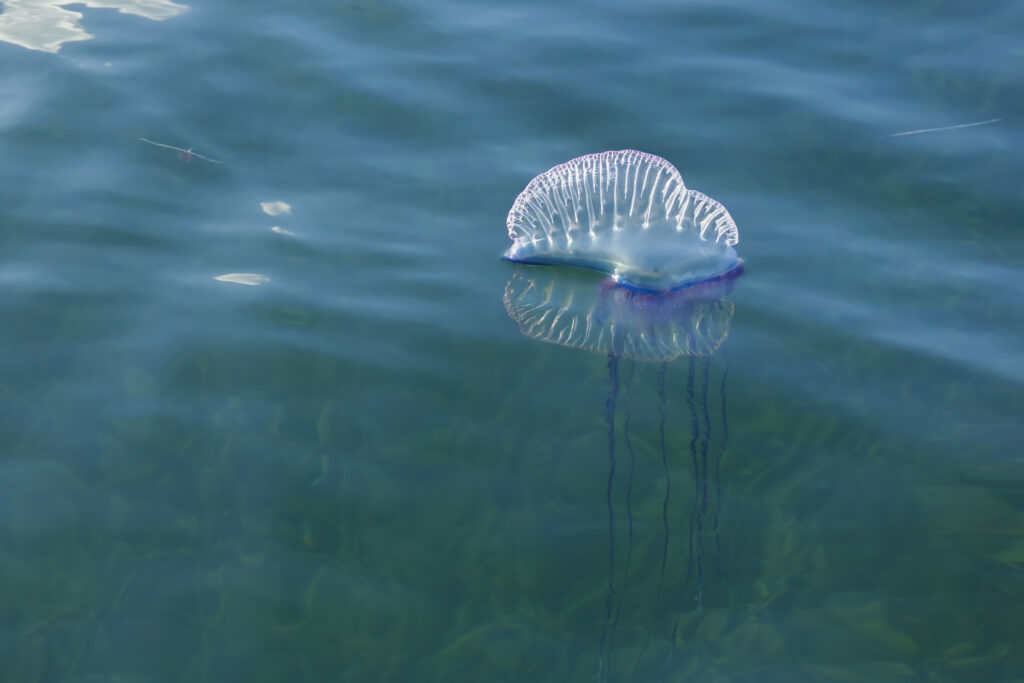
10. Portugese Man O’War
Where: Worldwide
Toxin Purpose: Sting & paralyse prey
While many think the Portuguese Man O’War is a jellyfish, it’s actually a siphonophore, defined as “small transparent creatures of the sea“. Siphonophores, including the Portuguese Man O’War, are organisms crafted from multiple smaller organisms (zooids) that function together as one. Their tentacles (reaching up to 50 meters in length) are deadly, causing intense pain, welts and boils, and allergic reactions.
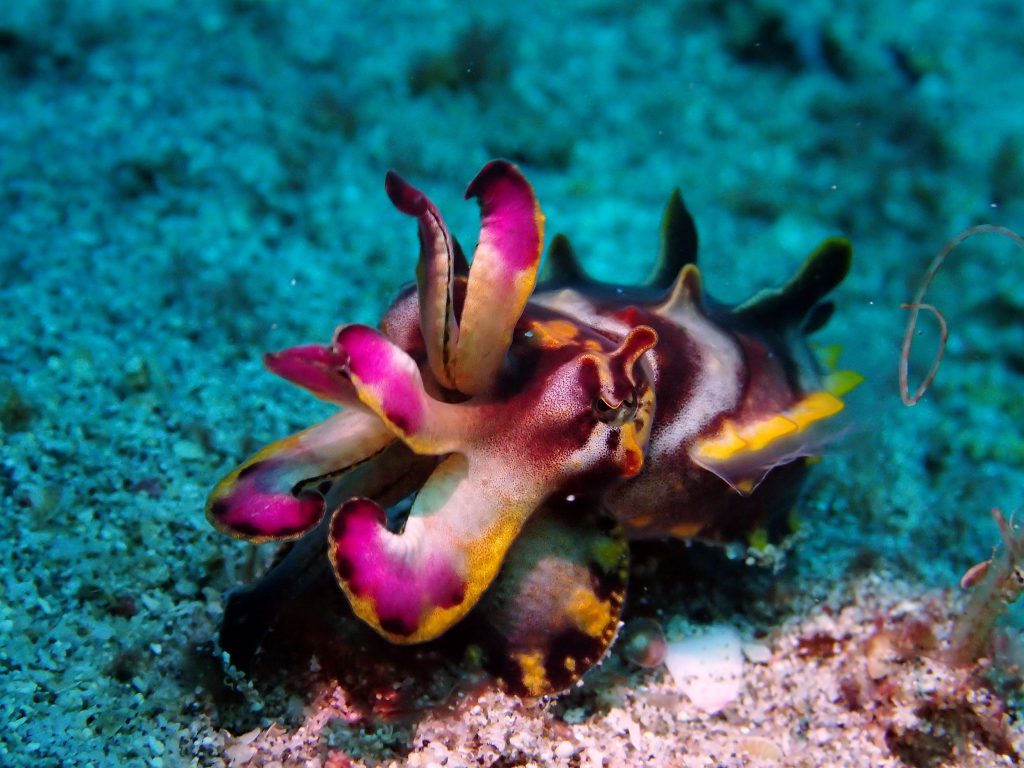
11. Flamboyant Cuttlefish
Where: Indian and Pacific Oceans
Toxin Purpose: Deter predators
Perhaps the most unique feature of the flamboyant cuttlefish is its method of movement — using arms and fins to move along the seabed, as opposed to swimming. Living up to the name, they use flamboyant displays of colours to communicate and deter predators. While their defence methods are primarily to deter predators, some say these possess venomous qualities like the Blue-Ringed octopus.
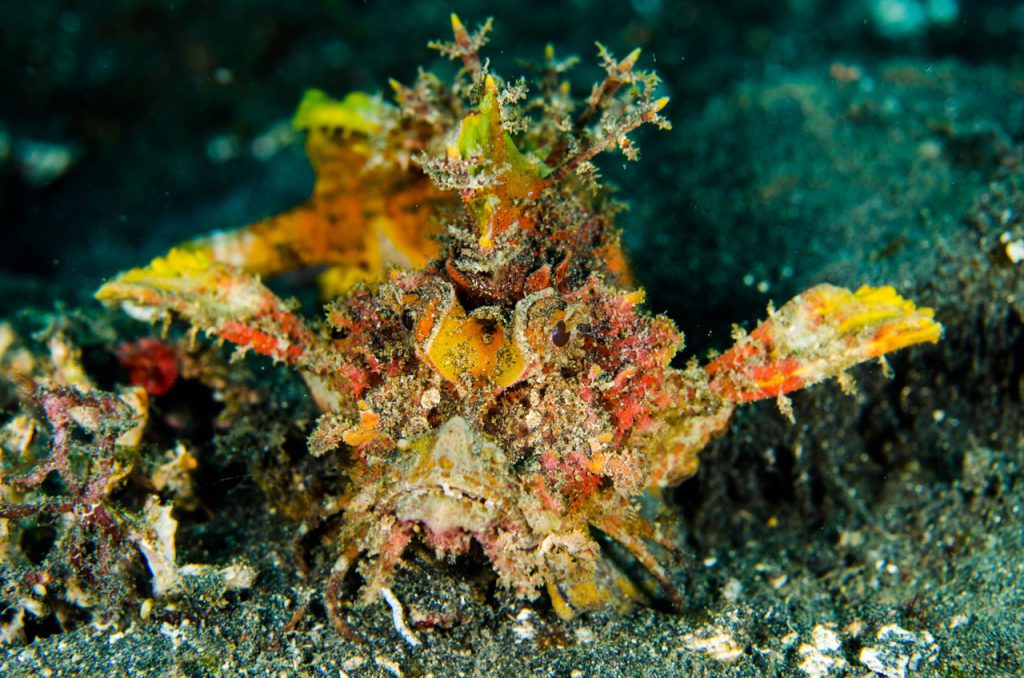
12. Scorpionfish
Where: Worldwide
Toxin Purpose: Sting & injure prey
Scorpionfish are masters of disguise, blending into coral reefs and the seafloor effortlessly. If stepped on, their sharp dorsal spines, populated with venomous glands, cause severe swelling and pain. In severe cases, this may result in systemic effects like shortness of breath, heart rate, and cardiovascular difficulties.

If you’ve been bitten or stung by any of these toxic creatures, seek immediate medical assistance. Emergency First Response® Primary and Secondary Care training teaches you what to do in the critical moments between when a life-threatening emergency occurs and when emergency medical services arrive. We also recommend contacting the Divers Alert Network (DAN) if you have been in contact with hazardous marine life.
